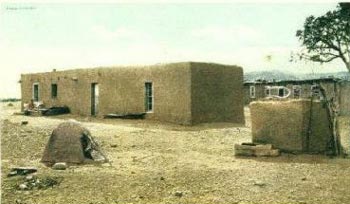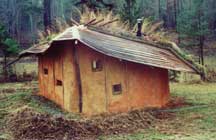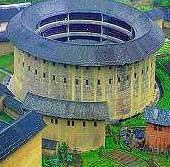Probably the most comprehensive book on Earth Architecture and it’s relationship to the past and the future is Down To Earth, written by Jean Dethier as part of a French exhibition on earth building in the 1980’s.
Satara Housing in Mauritania
A new post on www.terracruda.com of Satrara Housing in Maritania built in 1975 by ADAUA (The African Association for the Development of Architecture and Urban planning). Italian to English translations at babelfish.
Adobe in Northern Colorado
Between 1927 and 1935, New Mexico immigrants John and Inez Rivera Romero built a four-room adobe house in Fort Collins’ Andersonville district. Romero family members continuously occupied the home until the Poudre Landmarks Foundation purchased it in 2001. Hispanic Adobe structures are rarely found as far north as Fort Collins. The Romero House signifies the necessity of combining skill, adaptability and expediency in constructing an inexpensive, yet sound, structure in a short period of time. Adobe bricks, made of sand and clay mixed with water and straw, were easily made and dried in the open air. Designated as a Fort Collins local historic landmark, the Romero House will be renovated into the Museo de las Tres Colonias and serve as an interpretative center for the contributions of the Hispanic community to northern Colorado.
Adobe House

A typical flat-roofed New Mexican dwelling with earth plastered adobe and an earthen roof. 1906
Rammed Earth in Las Vegas
A 46,000-square-foot Desert Living Center designed by Lucchesi, Galati Architects of Las Vegas, will use earth-rammed walls that improve heating and cooling, and angled roofing that will collect rainwater for irrigation and flushing toilets.
Cob House in South Carolina

The builders, Jacques Abelman, Nik Bertulis and Aysha Massel , were pushing two extremes of tradition construction and materials in an experimental project to assemble and build a fully living structure in Seneca, South Carolina.
Adobe That Survives Earthquakes
When an earthquake measuring 8.1 on the Richter Scale rocked the Andean region for over a minute in June, 2001, the southern Peruvian mountain town of Moquegua was literally shaken to pieces. But amid the rubble, three traditional adobe houses were left intact.
Chinese Hakka Architecture

Regarded by architects as the cream of Chinese traditional residential architecture, tulou, or earth buildings, first appeared about 1,200 years ago, and were mostly completed in the Ming (1368-1644) and Qing (1644-1911) dynasties. They were built and inhabited by the Hakka people – a group belonging to the Han family who can trace their ancestors back more than 1,500 years to central and north China. During the hundreds of years of migration, the Hakka people tried to maintain their own culture and way of life, keeping their own unique dialect, custom and cuisine. They built the earth complexes to guard against invasion from local bandits and to protect their children from the influence of local communities. All the families of a Hakka clan lived together in an enclosed rammed earth building.
Rammed Earth Sculpture
“Invisible Operations”, by Karen McCoy is comprised of twenty-eight rammed earth geometric solids ranging in size from 1′ x 1′ x 1′ blocks to a 6.5′ x 2′ x 6′ wall and are situated within a grid at the South Carolina Botanical Gardens.
Earth Building in New Zealand
Graeme North looks at the history and future of earth-building in New Zealand.
